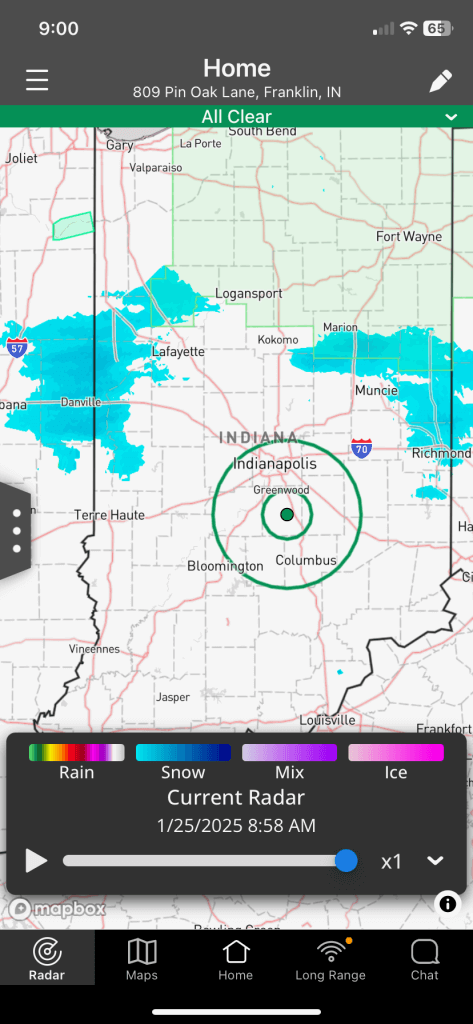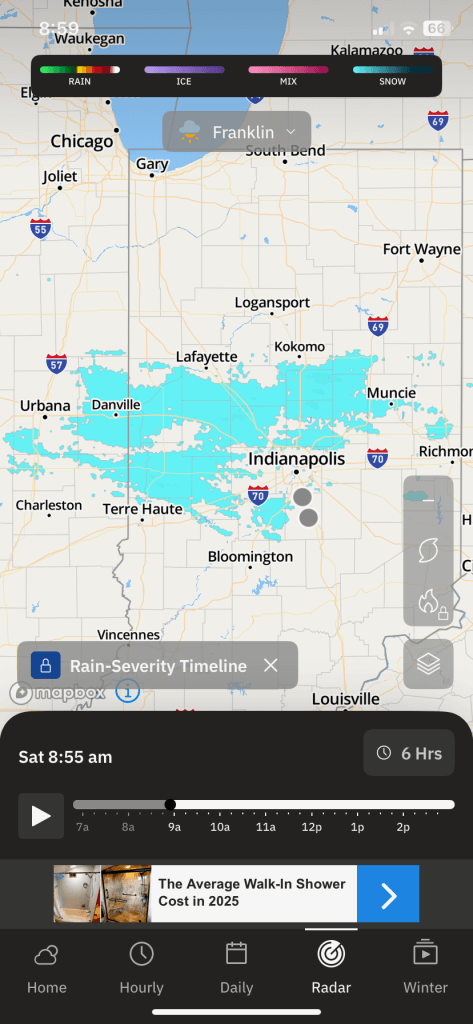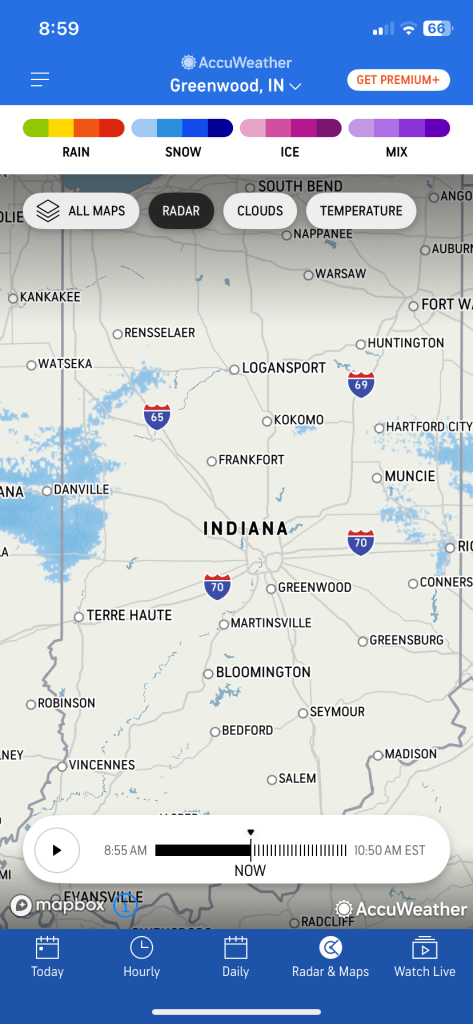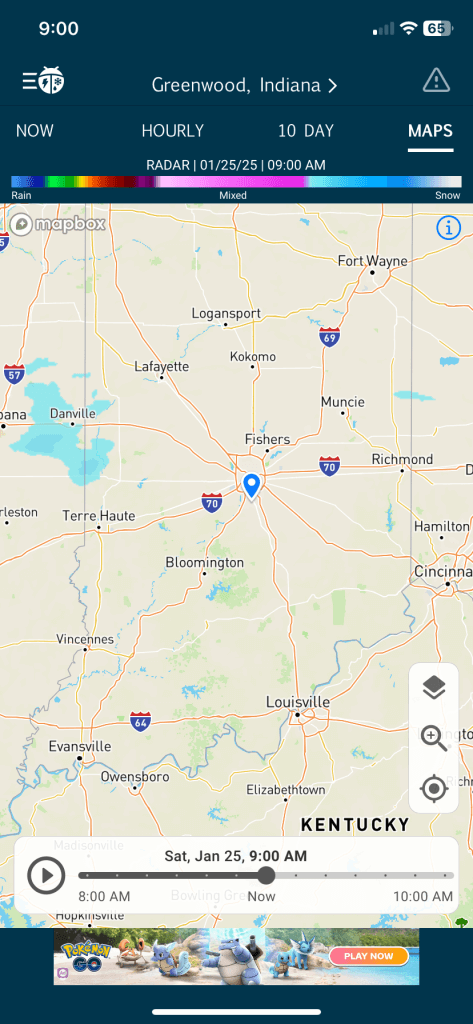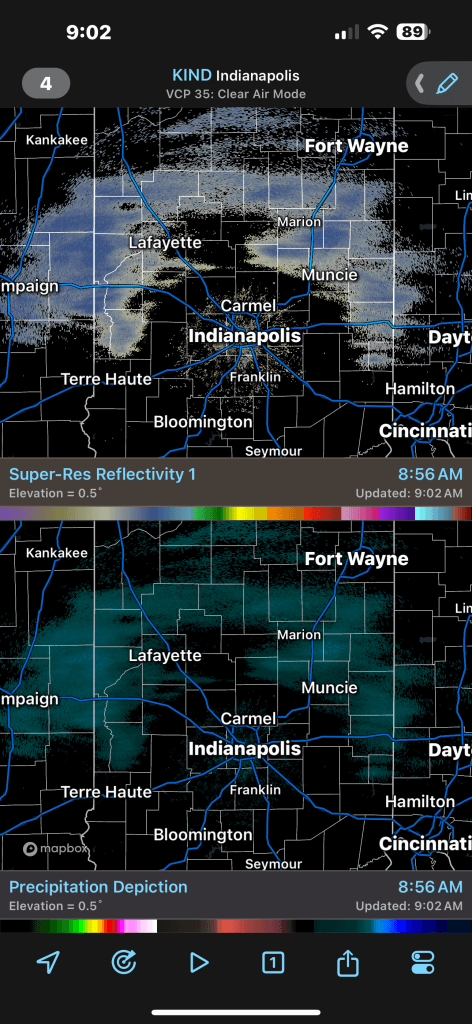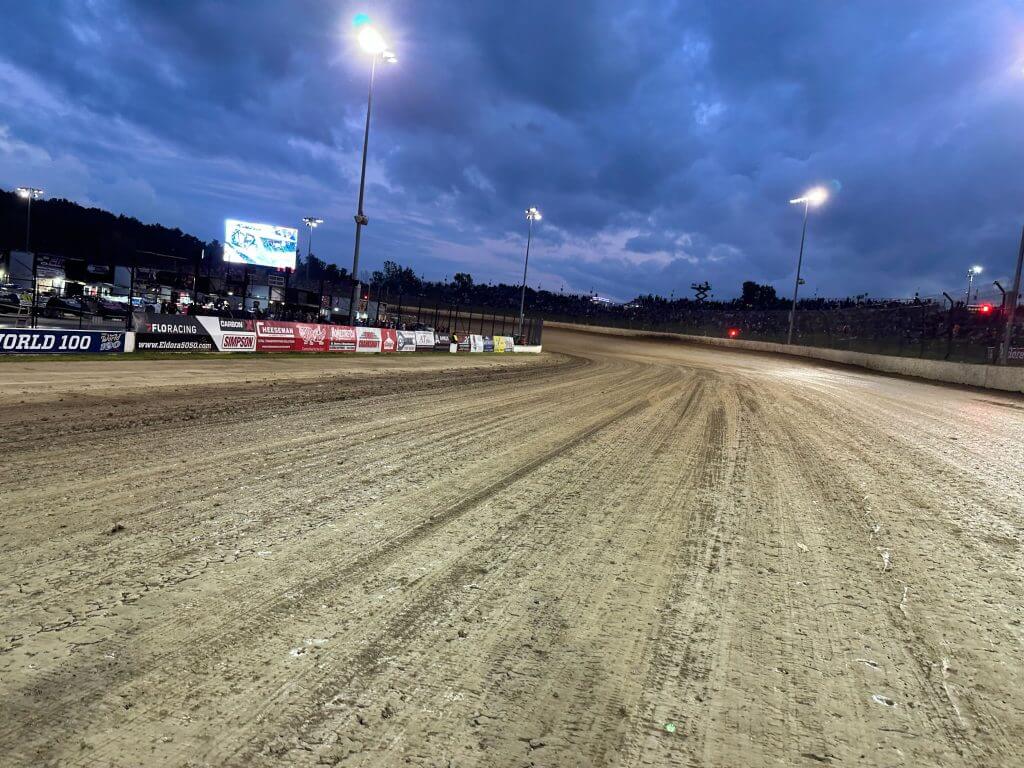One of the more frustrating aspects in trying to figure out the weather on a daily basis is understanding the differences in every app’s radar and how it works.
There are two big differences of the “Current Radar” feature in all weather apps:
–Sensitivity to Rates: Some apps will “filter out” light precipitation to keep imaging more clear and user friendly. In turn, some apps miss on flurries / drizzle that can impact operations.
–Type of Network: Multi Radars vs a Single Radar– Apps that only take into account one radar for the current radar can miss out on precipitation that multiple radars are picking up on.
All radar images were taken below on Saturday, January 25, 2025 at ~8:55 AM ET.
How do BAM Weather Meteorologists combat this and provide value to clients and users.
Instead of relying solely on computer projections and automated data, BAM Weather will verify whether the radar is accurately reflecting what is reaching the surface by looking at ground truth reports and observations. Once they have a “full picture” of the state of the current atmosphere, they will evaluate various models to determine if at a given time, conditions will change. After these two very important steps, the meteorologists will determine if a NowCast is needed to provide additional clarity if radar is potentially overdoing what is reaching the surface.
Why is this important? Why is this different from free apps?
- BAM Weather strives to ensure products are accurate. While automated data and advancing technology can give forecasters many advantages, human interpretation is a vital piece of ensuring relevant information is being communicated to users.
- Free weather apps will NOT provide a customized forecast or an accuracy check when radar overperforms / underperforms. While every platform has its differences, there is no luxury of knowing “when” or “where” the app might be struggling–users are simply left guessing.
- BAM Weather meteorologists are working around the clock to verify data is as correct as possible for all regions, taking whatever steps needed to communicate the risk to users.
By: John Kemper
